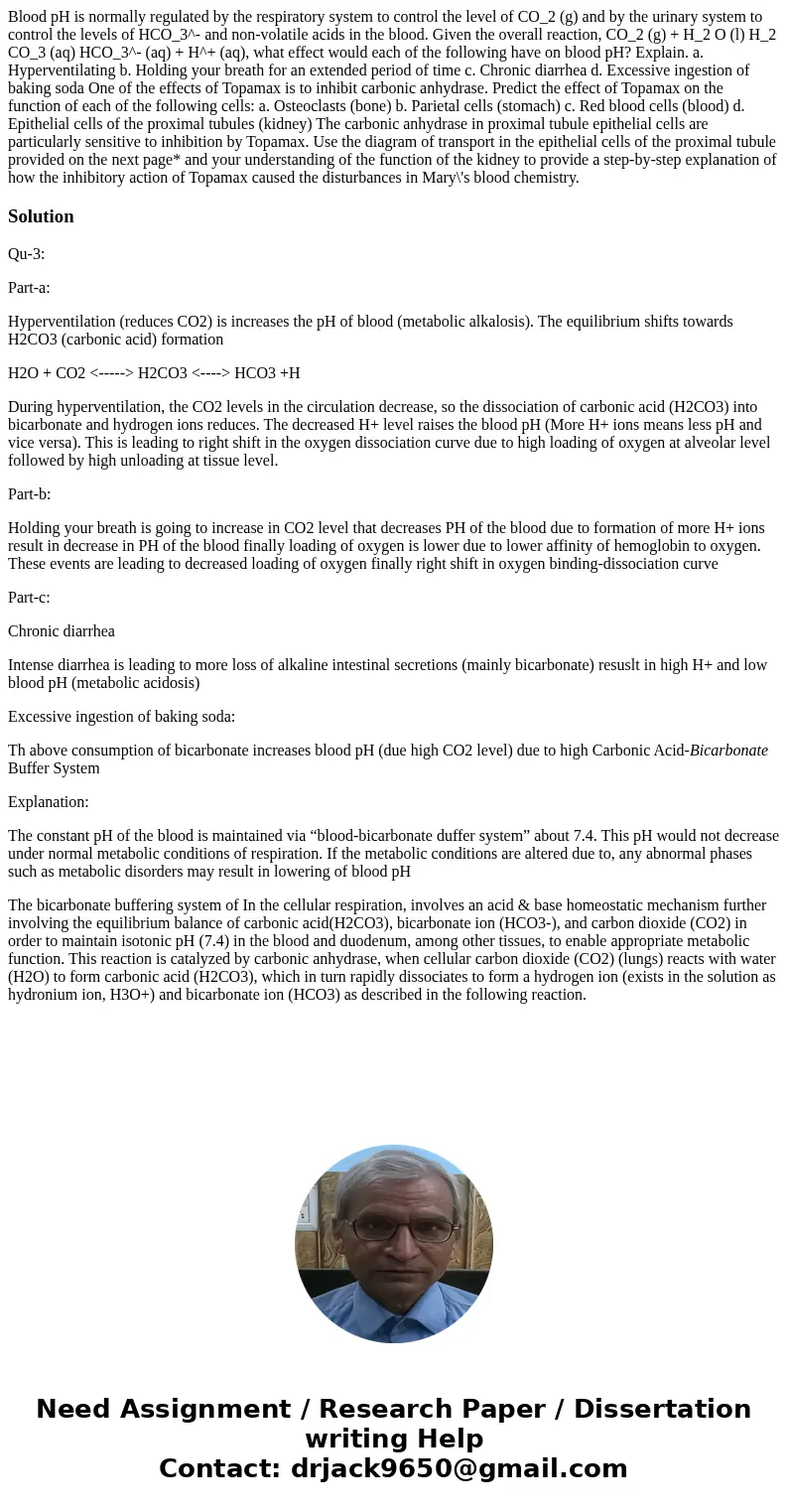Blood pH is normally regulated by the respiratory system to
Solution
Qu-3:
Part-a:
Hyperventilation (reduces CO2) is increases the pH of blood (metabolic alkalosis). The equilibrium shifts towards H2CO3 (carbonic acid) formation
H2O + CO2 <-----> H2CO3 <----> HCO3 +H
During hyperventilation, the CO2 levels in the circulation decrease, so the dissociation of carbonic acid (H2CO3) into bicarbonate and hydrogen ions reduces. The decreased H+ level raises the blood pH (More H+ ions means less pH and vice versa). This is leading to right shift in the oxygen dissociation curve due to high loading of oxygen at alveolar level followed by high unloading at tissue level.
Part-b:
Holding your breath is going to increase in CO2 level that decreases PH of the blood due to formation of more H+ ions result in decrease in PH of the blood finally loading of oxygen is lower due to lower affinity of hemoglobin to oxygen. These events are leading to decreased loading of oxygen finally right shift in oxygen binding-dissociation curve
Part-c:
Chronic diarrhea
Intense diarrhea is leading to more loss of alkaline intestinal secretions (mainly bicarbonate) resuslt in high H+ and low blood pH (metabolic acidosis)
Excessive ingestion of baking soda:
Th above consumption of bicarbonate increases blood pH (due high CO2 level) due to high Carbonic Acid-Bicarbonate Buffer System
Explanation:
The constant pH of the blood is maintained via “blood-bicarbonate duffer system” about 7.4. This pH would not decrease under normal metabolic conditions of respiration. If the metabolic conditions are altered due to, any abnormal phases such as metabolic disorders may result in lowering of blood pH
The bicarbonate buffering system of In the cellular respiration, involves an acid & base homeostatic mechanism further involving the equilibrium balance of carbonic acid(H2CO3), bicarbonate ion (HCO3-), and carbon dioxide (CO2) in order to maintain isotonic pH (7.4) in the blood and duodenum, among other tissues, to enable appropriate metabolic function. This reaction is catalyzed by carbonic anhydrase, when cellular carbon dioxide (CO2) (lungs) reacts with water (H2O) to form carbonic acid (H2CO3), which in turn rapidly dissociates to form a hydrogen ion (exists in the solution as hydronium ion, H3O+) and bicarbonate ion (HCO3) as described in the following reaction.

 Homework Sourse
Homework Sourse